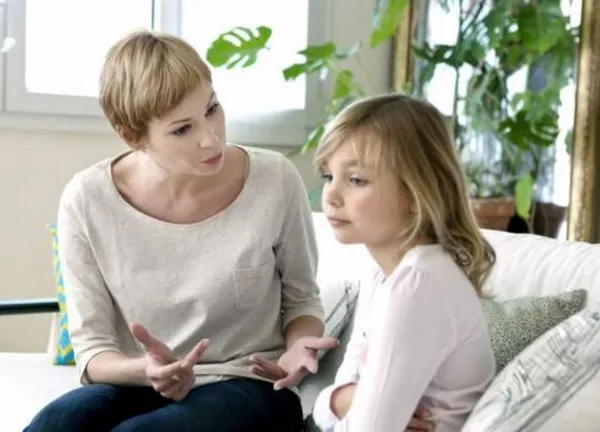Social anxiety is a common mental health condition that affects millions of people worldwide. Individuals with social anxiety experience intense fear and discomfort in social situations, leading to avoidance and distress. While the exact causes of social anxiety are complex and multifaceted, researchers have identified several key factors that contribute to the development of this condition.
1. Genetic Predisposition
Research has indicated that social anxiety can have a genetic component. Individuals with a family history of anxiety disorders, including social anxiety, may be at a higher risk of developing the condition themselves. Genetic studies have identified specific genes that may play a role in regulating anxiety-related brain functions, impacting an individual’s vulnerability to social anxiety.
2. Neurobiological Factors
The brain’s neurobiological processes also contribute to social anxiety. Neurotransmitters, such as serotonin, dopamine, and norepinephrine, play a crucial role in regulating mood and anxiety. An imbalance in these neurotransmitters can lead to heightened anxiety responses in social situations. Additionally, brain regions responsible for processing social information, such as the amygdala and prefrontal cortex, may be hyperactive in individuals with social anxiety, further contributing to their anxiety response.
3. Environmental Influences
Environmental factors can significantly influence the development of social anxiety. Adverse experiences, such as childhood trauma, bullying, or social rejection, can contribute to the onset of social anxiety in susceptible individuals. Negative social experiences during formative years can shape an individual’s beliefs and perceptions about social interactions, leading to the development of fear and avoidance behaviors.
4. Learned Behavior
Social anxiety can also be learned through observational and experiential processes. Individuals who witness anxious behaviors or receive negative reinforcement for social interactions may internalize these responses and develop their own anxiety in social situations. For instance, if a child observes a caregiver displaying anxious behavior in social situations, they may learn to perceive social interactions as threatening.
5. Cognitive Factors
Cognitive factors play a pivotal role in the development and maintenance of social anxiety. Negative thought patterns, such as catastrophic thinking, overestimating the likelihood of negative outcomes, and underestimating one’s abilities, can intensify feelings of fear and insecurity in social situations. These cognitive distortions contribute to a heightened state of self-consciousness and create a negative feedback loop of anxious thoughts and feelings.
6. Early Childhood Experiences
Childhood experiences, particularly those involving attachment relationships, can influence an individual’s susceptibility to social anxiety. Insecure attachment styles, such as anxious or avoidant attachments, may impact how individuals perceive social interactions and form relationships later in life. Early experiences of rejection or neglect can lead to a heightened sensitivity to social evaluation and increase the risk of developing social anxiety.
7. Social Learning Theory
Social learning theory posits that individuals learn from observing and modeling the behavior of others. In the context of social anxiety, individuals may develop anxiety-related behaviors by observing others’ anxious responses in social situations. For instance, witnessing peers or family members displaying anxious behaviors can lead to the internalization of similar responses.
8. Social Expectations and Pressure
Societal and cultural expectations can also contribute to social anxiety. Pressure to conform to certain social norms and fear of judgment or criticism from others can create a sense of social scrutiny. Individuals with social anxiety may feel the need to meet unrealistic standards, leading to increased anxiety and avoidance of social situations.
9. Perfectionism
Perfectionism, a personality trait characterized by a strong need to be flawless and fear of making mistakes, is associated with social anxiety. Perfectionistic individuals may fear social interactions because they worry about being judged or evaluated negatively. The fear of not meeting their high standards can lead to avoidance of social situations.
10. Coping Strategies
Social anxiety can arise as a coping strategy in response to stress or trauma. For some individuals, avoiding social situations provides a temporary sense of relief from anxiety. However, this avoidance can reinforce the fear response, making social interactions increasingly difficult to navigate over time.
Conclusion
Social anxiety is a complex mental health condition with multiple contributing factors. Genetic predisposition, neurobiological processes, environmental influences, learned behavior, and cognitive factors all play a role in the development and maintenance of social anxiety. Early childhood experiences, social learning theory, societal expectations, perfectionism, and coping strategies further shape an individual’s susceptibility to social anxiety. Recognizing the various causes of social anxiety can provide valuable insights into its nature and the potential interventions required for effective treatment. Individuals with social anxiety can benefit from seeking professional help, such as cognitive-behavioral therapy (CBT), which addresses both the cognitive and behavioral aspects of social anxiety. Understanding the main causes of social anxiety can empower individuals to take proactive steps towards managing their anxiety and improving their overall quality of life.




























